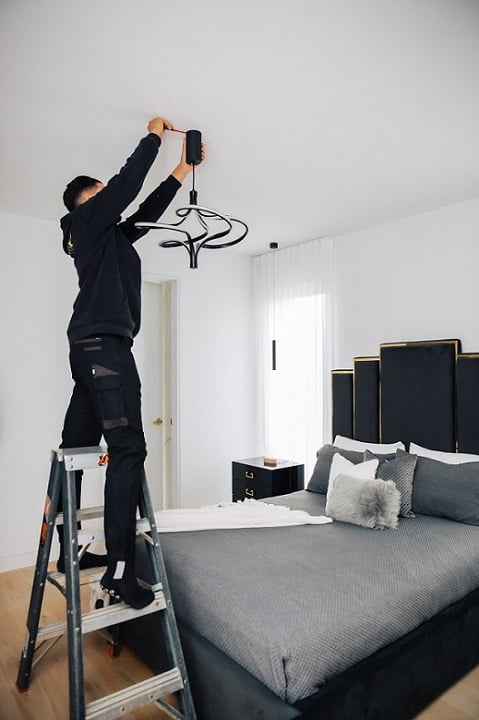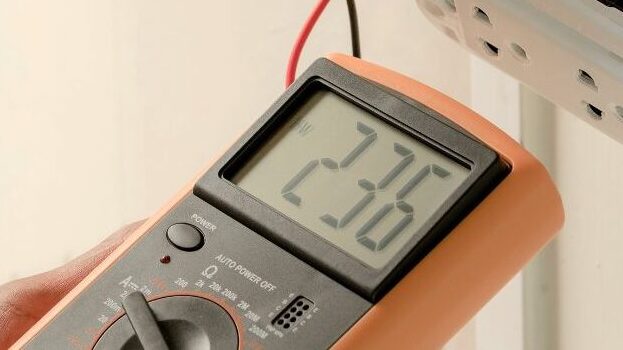Discover the Reasons Behind Your LED Light’s Sudden Dimming and Effective Repairs
Quick Solution to Try:
If you notice your LED light has unexpectedly dimmed, it is usually due to a voltage drop, circuit overload, or perhaps issues involving heat, poor connections, or even the use of inferior-quality LED bulbs. Continue reading for comprehensive advice on how to effectively tackle this issue.
Investigate the Top 5 Reasons for LED Light Dimming and Learn How to Fix Them
LED lights are praised for their durability and long lifespan, often promised to last for several years. However, many users find themselves frustrated when their lights fail within just a season. Whether you have downlights in your kitchen, decorative garden lights, or festive Christmas LED lights, sudden dimming can be both disheartening and frequent. This extensive guide delves into the primary causes of LED dimming and offers safe, efficient troubleshooting methods to restore your lighting to its intended brightness.

1. Understanding the Impact of Voltage Drops on LED Light Brightness
The leading cause of unexpected dimming in LED lights is often attributed to a voltage drop. When the voltage supplied to your light fixture dips below the level required for optimal performance, you’ll notice a marked decrease in brightness. But what triggers these voltage drops? Several factors contribute to this issue:
- Temporary disturbances in the power grid
- Local circuits suffering from overloads
- Excessive wiring lengths utilizing thin cables
- Faulty switchboards or insufficient connections
Voltage drops can pose significant challenges, especially with budget LED lights that frequently lack adequate voltage regulation, rendering them particularly sensitive to minor fluctuations in voltage. To implement effective solutions, consider investing in high-quality products designed to handle such issues.
Also Read: 10 Ways to Save On Power And Energy Costs
2. How to Detect Overloaded Circuits in Older Homes
Overloading electrical circuits by connecting too many devices or appliances can place a significant strain on your power supply. When a circuit cannot keep up with the demand, voltage is unevenly distributed across devices, resulting in dimming lights, particularly in sensitive LEDs. This issue is especially prevalent in older homes designed before the advent of modern, energy-intensive technologies. Signs of overloaded circuits typically include:
- Flickering of lights
- Buzzing sounds from switches
- Dimming lights, particularly in affordable LEDs that may lack necessary protective features.
Schedule a Quote and Inquire About Our FREE Electrical Inspections
3. How to Identify and Fix Loose Connections and Damaged Wiring
Insufficient power delivery can often be traced back to loose fittings or aging wiring. If you notice your light flickering or dimming when you adjust a switch or device, it could indicate loose connections. Here are critical areas to inspect:
- Ensure the light bulb is securely seated
- Watch for flickering at the wall switch
- Examine for burn marks, discoloration, or unusual buzzing sounds
Important Note: Many low-cost LED lights utilize thin or subpar internal wiring, making them more susceptible to failure due to heat or movement. Regular inspections and maintenance can help prevent unexpected issues from arising.
Also Read: Keep Your Pets Safe Around Electricity
4. Understanding the Dangers of Overheating in LED Lights
Although LEDs generate less heat compared to traditional incandescent bulbs, they still require effective heat dissipation. When an LED overheats, it will automatically dim to protect its internal components. Several factors can lead to overheating:
- Enclosed light fixtures that limit airflow
- Faulty heat sinks, particularly in budget models
- Excessively high ambient temperatures
- Insufficient air circulation around the fixture
If your LED housing feels hot to the touch, it is likely experiencing overheating issues. This situation is particularly common with inexpensive, poorly ventilated LED downlights or outdoor lights placed in direct sunlight without sufficient thermal protection.

5. The Role of Lumen Depreciation in LED Light Dimming Over Time
Even high-quality LEDs will gradually diminish in brightness with prolonged usage, a process known as lumen depreciation. Quality LEDs can maintain about 70% to 90% of their brightness after approximately 50,000 hours of operation. In contrast, cheap LED products may begin to lose brightness after only 5,000 to 10,000 hours, often doing so unevenly. If your light appears to be:
- A budget model, it may simply be nearing the end of its useful life.
- Several years old and heavily used
- Experiencing frequent on-and-off cycles
Why Do Inexpensive LED Lights Fail Prematurely?
During the holiday season, budget LED lights flood the market, available in various forms like string lights, downlights, and decorative garden features. The risks associated with these products include:
- Inconsistent voltage tolerance: making them susceptible to dimming and flickering
- Poor heat management: increasing the likelihood of overheating
- Subpar drivers: which cannot effectively regulate electrical current
- Lack of weatherproofing: making them unsuitable for outdoor use
Holiday Shopping Tip: When purchasing LED Christmas lights, seek out products that feature:
- IP65+ waterproof rating
- Certification compliance marks (e.g., RCM)
- Reputable brands (avoid lesser-known budget brands)
While opting for cheaper lights may save you money initially, they could incur higher costs in terms of frequent replacements, safety risks, and long-term frustration.
Effective Strategies for Fixing Dim LED Lights
Inspect for Loose Connections and Indicators of Overheating
Begin by thoroughly examining your light fixture. Is the bulb secured properly? Are there visible signs of fraying, corrosion, or damage? If you notice anything unusual, do not attempt to repair it yourself, especially if wires are exposed or if the fixture appears burnt or melted. Carefully touch the fixture; if it feels excessively hot—imagine “it-could-cook-an-egg” hot—that is a significant warning sign. Overheating fixtures pose serious hazards and often necessitate replacement.
Need help? We are Beacon Lighting Recommended Electricians, and installing and replacing LED fittings is our area of expertise. Whether you’re located in Braybrook, Yarraville, or nearby, Electrx can efficiently and safely resolve the issue.
Use a Multimeter to Test Voltage Levels
If your LED is dim due to low voltage, utilizing a multimeter can help pinpoint the issue. Testing the voltage at your LED fixture will reveal whether your lights are receiving adequate power supply. Compare the measured voltage with the recommended voltage for your specific LED lights. If the voltage is lower than needed, this may clarify the dimming. If the voltage consistently falls short, you might face a more significant electrical issue, and it would be wise to contact a qualified electrician for further evaluation.
If you find low voltage across multiple fixtures, there is likely a larger wiring or switchboard problem at play.

Review the Dimmer Switch Settings
We often encounter inquiries like this:
“Why is my light dim?”
Us: “Do you have a dimmer switch?”
Them: “…oh.”
Make sure that no inadvertent adjustments have been made to the dimmer switch, and check for compatibility issues with your LED model.
Test the Circuit by Turning Off Other Appliances
Consider turning off other devices connected to the same circuit as your LED lights. If your lights brighten afterward, you may be contending with an overloaded circuit. Implement the following strategies:
- Redistribute devices across different circuits to balance the load
- Upgrade your switchboard for enhanced performance
- Replace budget LED lights with more efficient models
Also Read: Electrical Upgrades For Your Office
Replace the LED Bulb if Necessary
If none of these troubleshooting methods resolve the issue, your LED may simply be nearing the end of its life. Test this by swapping it out with another LED bulb from your home. If the replacement bulb restores full brightness, the old bulb likely needed replacement. If changing the bulb does not solve the problem, the underlying cause is probably located elsewhere.
Key Takeaways on LED Dimming Challenges
So, why did your LED light suddenly dim? The potential sources could include:
- Voltage drops affecting overall performance
- Loose connections disrupting power flow
- Heat accumulation compromising functionality
- Circuit overload caused by too many devices
- Or the LED itself—especially if it is a budget model
With this comprehensive guide, you are now equipped with the knowledge to identify what to check—and how to remedy the situation.
However, if you feel uncertain or observe any signs of damage, never compromise on electrical safety.
Let Electrx Provide Professional Assistance for Your Electrical Needs
We are licensed electricians and recognized installers for Beacon Lighting. Our extensive services include:
- Testing and replacement of LED fixtures to guarantee safety
- Circuit diagnosis to identify and rectify issues
- Solutions to address overload and overheating challenges
- Safe, long-lasting electrical upgrades for your home
If you have any doubts regarding electrical concerns, it is always prudent to consult a professional electrician, such as Electrx Electricians. Reach out to us today for expert assistance.

Common Questions Regarding LED Troubleshooting
Q: Why is my new LED bulb already dim?
A: This issue may arise from a voltage drop, faulty wiring, or a low-quality LED that lacks sufficient voltage regulation. Consider replacing it with a high-quality LED to see if that resolves the dimming.
Q: Do inexpensive LED lights dim more quickly?
A: Absolutely. Budget LEDs frequently lack adequate heat sinks and stable drivers, leading to premature lumen loss, flickering, and dimming—particularly in hot or outdoor conditions.
Q: Why do my Christmas lights flicker and fade?
A: Seasonal LED string lights are often manufactured using lower-grade components. Environmental factors, overuse, and power surges can all contribute to dimming. Always choose outdoor-rated, certified lighting to guarantee durability.
Q: Can I troubleshoot dimming LED lights on my own?
A: You can start by checking fittings, testing voltage levels, and replacing bulbs. However, if the issue persists—especially across multiple fixtures—it’s prudent to contact a licensed electrician for professional help.
The Article: LED Light Dim? Discover the Reasons Behind It first appeared on https://writebuff.com
The Article LED Light Dim: Uncover the Causes of Dimming Issues Was Found On https://limitsofstrategy.com


No responses yet